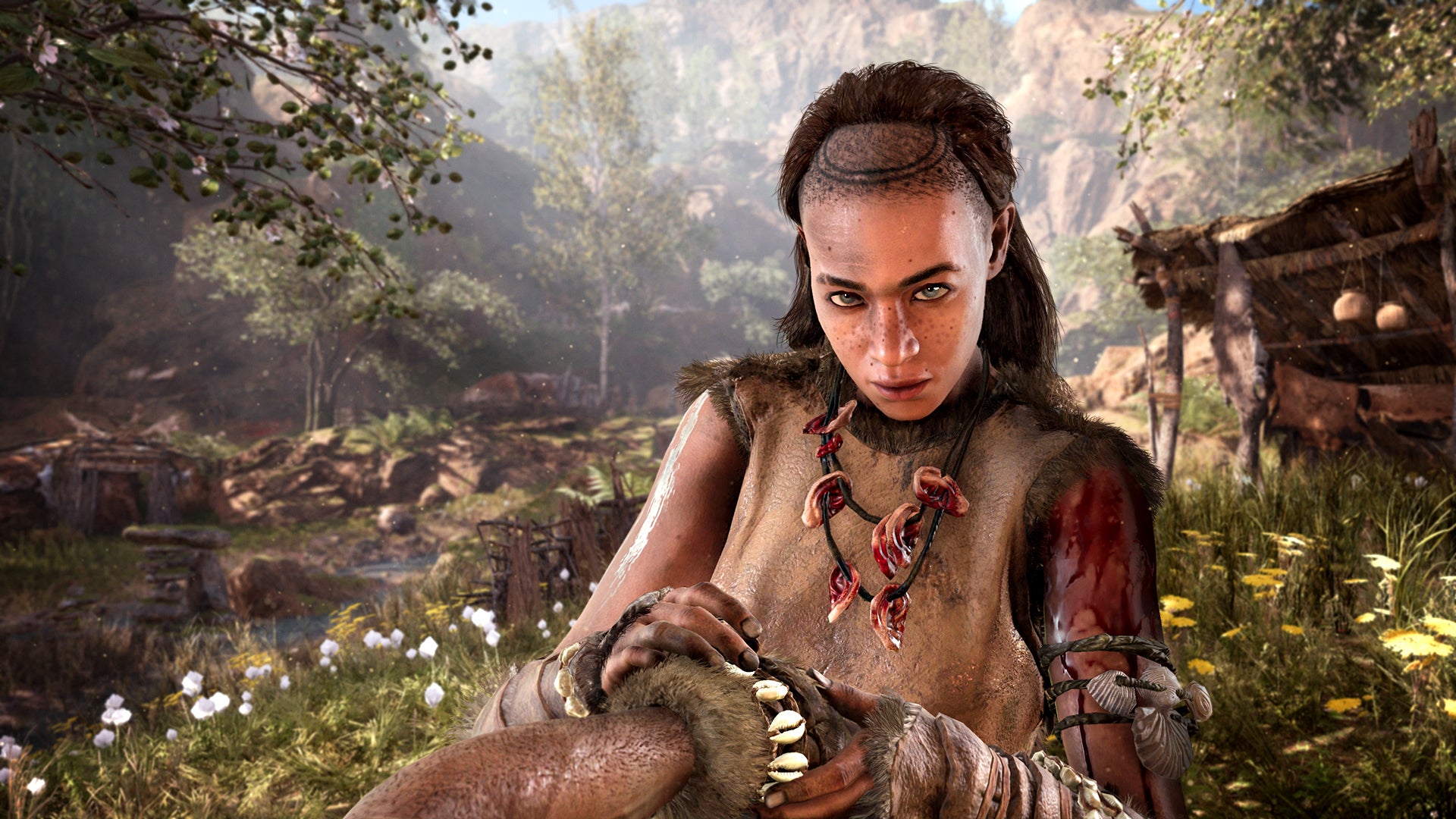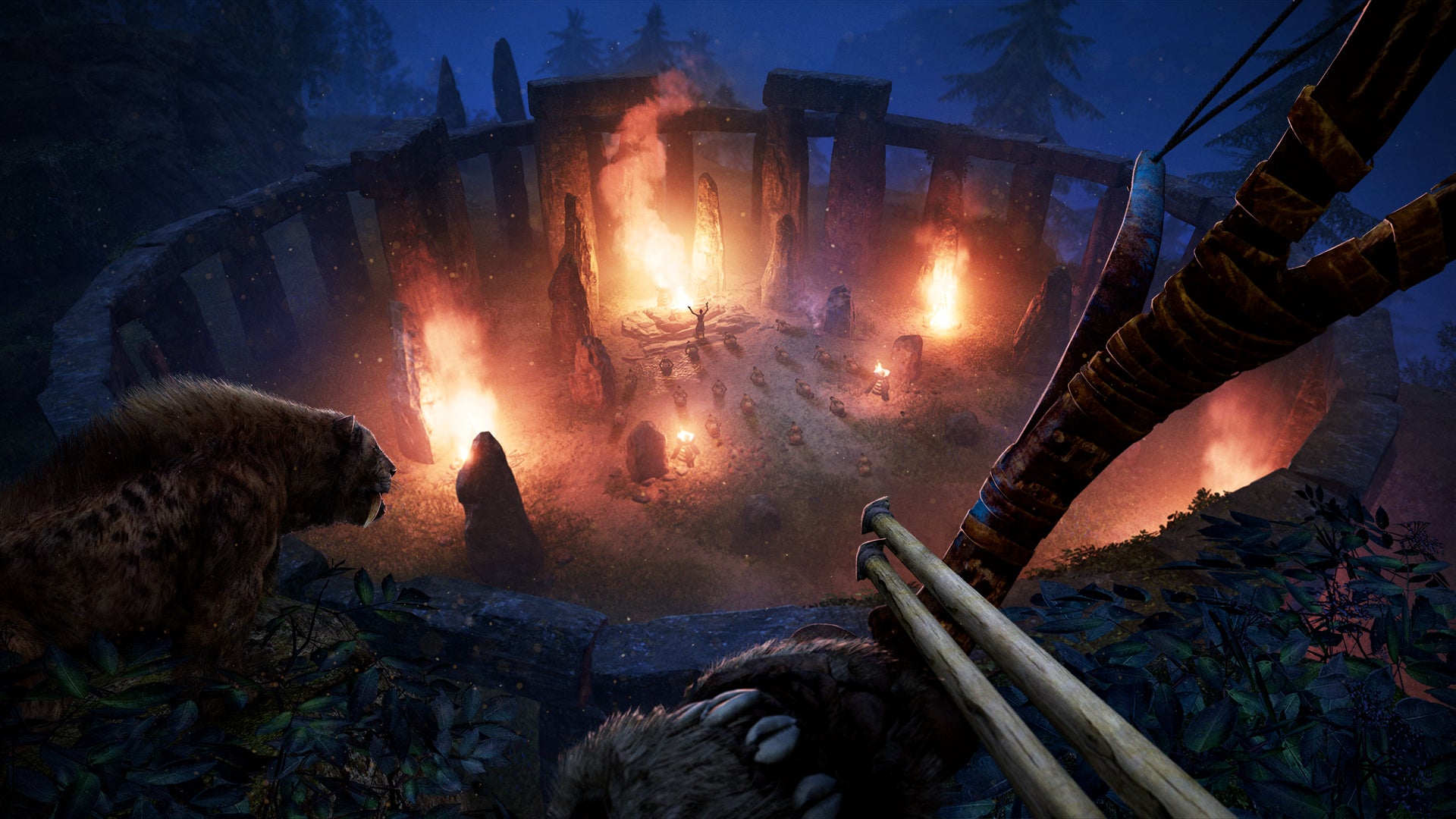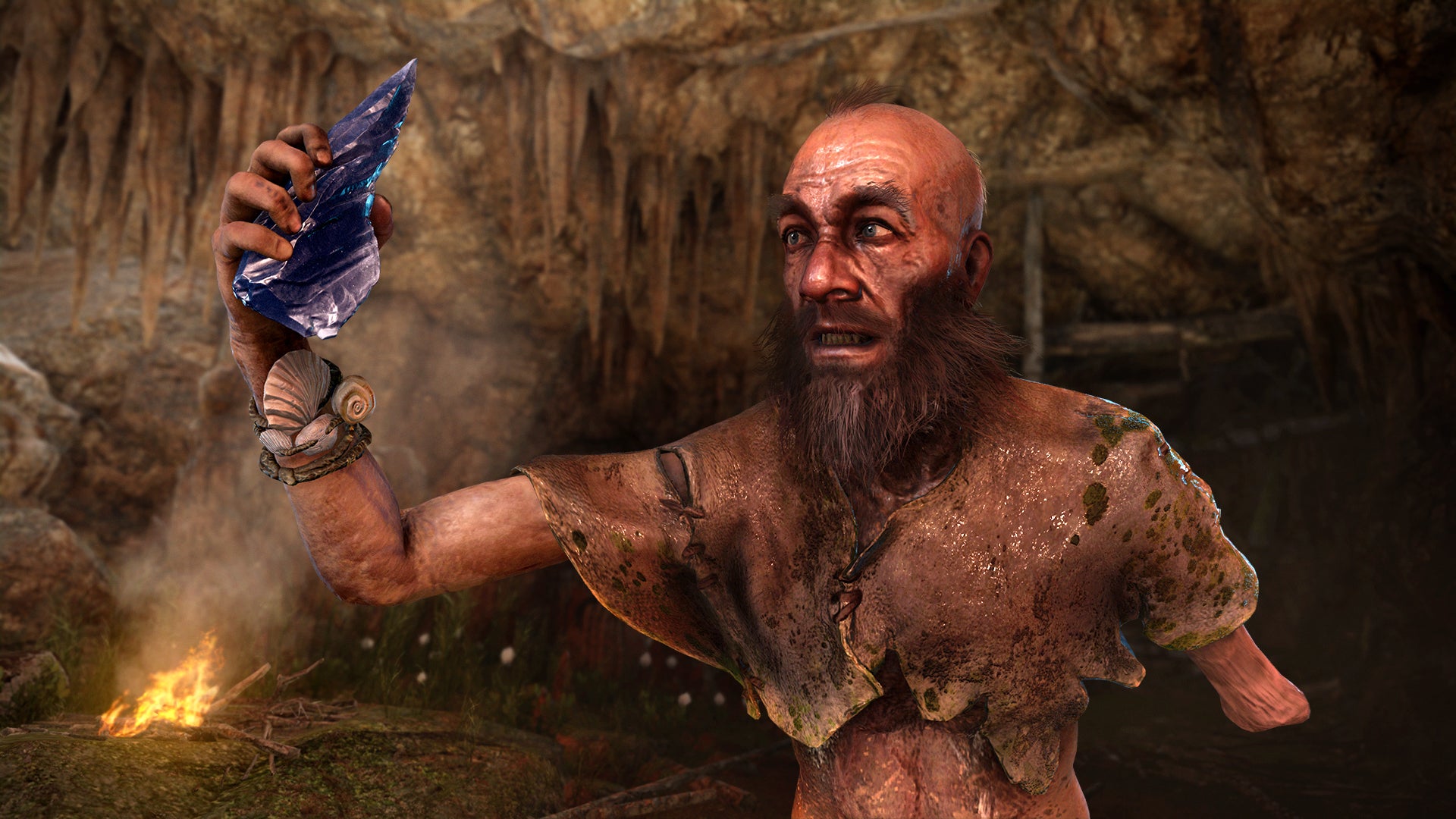Far Cry Primal preview: Hands-on with Ubisoft's Stone Age explorer
In a break from tradition, the latest game in the Far Cry series takes place 12,000 years in the past

It's hard to find a period of history that hasn't been depicted in a game yet. Recent triple-A titles like the Assassin's Creed series have painstakingly depicted a huge range of environments - taking us all the way from the medieval Holy Land to Victorian London, stopping off in 16th-Century China along the way.
However, caveman games are few and far between, which is what makes Ubisoft's upcoming Far Cry Primal so unusual.
Set 12,000 years in the past in the fictional central European land of Oros, you play the role of Takkar, a member of the beleaguered Wenja tribe.
In the first few hours of gameplay, a preview version of which was recently played by The Independent, we see Takkar get separated from the rest of his group after a wooly mammoth hunt goes wrong.
Forced to survive, he embarks on a quest to restore his tribe to its former glory, with the game following as he tames animals, crafts weapons, gains followers and prestige and fights against his rivals in the Udam and Izila tribes.
Far Cry has always been about superlatives - big guns, fast vehicles and lots of explosions. Where else but in 2014's Far Cry 4, the previous game in the series, could you speed down a Himalayan mountain on a snowmobile while trying to kill a Yeti with a machine gun?

Since Primal is set before the invention of the wheel, weapons are naturally less explosive. Clubs, spears and arrows are the main choices, although there's a few primitive grenades thrown in too - fortunately, Primal isn’t afraid to stray from historical accuracy from time to time.
Very few games have ever done first-person melee combat well, but Primal has done a better job than most. Impacts feel weighty and visceral, and it the game rewards you with a satisfying, meaty ‘thwack’ when you bash an enemy’s head in with a club, stick a flying spear in their chest, or take them down with an arrow as they charge you.
This kind of combat can often make the player feel detached from the on-screen action if it’s not done properly, so it was always a risk to make it such a major part of the game - fortunately, it appears to have paid off.

Alongside the roaming-and-killing mechanic is a crafting element, where the player has to gather natural resources to create new weapons and potions.
One of the best pieces of equipment the player can get in the game, however, is an animal companion - Takkar can tame wild animals and have them do his bidding, which adds an extra dimension to the combat. It feels good to wade into battle alongside your pet wolf, getting it to tear someone's throat out while you shoot flaming arrows into the enemy camp.
Takkar also has an owl companion, which he gains during a psychedelic episode near the start of the game. The player can take control of the owl and scout the surrounding area (like they did with the binoculars in previous Far Cry games), ‘tagging’ enemies and even attacking them - a silly but very fun ability.

Far Cry always does environments well, and the stone-age land of Oros is no exception. Taking in expansive plains, verdant valleys and mountainous regions, the game world is huge, and each part seems interesting and unique - it never seems like Ubisoft has just copy/pasted identical hills just to bulk out the map.
The supporting cast is just as diverse - shamans, hunters and other NPCs help Takkar along the way, all speaking their own proto-European language, created for Primal by historical linguists. In fact, there's no spoken English at all in the entire game.
Overall, what stands out is how vulnerable you can feel - rather than being a machine gun-wielding superman, you play a primitive human at the mercy of his surroundings.
A couple of times, usually after nightfall, I found myself getting stuck out in the forest, with jaguars circling around me and only three arrows and a club left in my inventory. There’s an interesting level of difficulty associated with simply navigating and surviving the game - it is possible to fast-travel around the map as you discover new areas, but unusually for an open-world RPG of this scale, I didn’t have any desire to use it. It’s much more fun just to roam around, finding new points of interests and coming across rare animals or resources.
It’s a big game and I only played a short preview of it, so it's impossible to pass judgement on the entire title at the moment. However, looking at the basic building blocks of the game - the combat system, the game environment and the overall ‘feel’ - Far Cry's experiment in stone-age gaming looks promising.
Far Cry Primal will be released on PlayStation 4 and Xbox One on 23 February. The PC version will come out on 1 March.
Bookmark popover
Removed from bookmarks